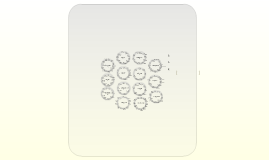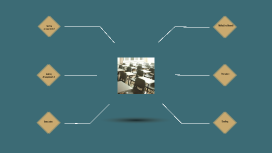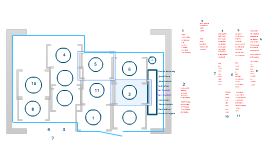Seating plan
Transcript: YOUR LOGO HERE Seating arrangements Does a seating plan influence classroom management ? Is a seating plan vital to a successful learning environment ? Seating A study by Mckeachie(1990) suggested that increased student participation stimulates in depth learning processes due to involvement in answering questions which promote these cognitive thinking skills. Burda & Brooks (1996) and Edwards (2000), propose that if student choose where they sit those with with higher motivation and a deeper interest in learning will sit at the front of the classroom and students who sit further back exhibit less motivation and interest. Other research that has been conducted where students have been moved from the back to the front of the class suggested that their learning improved significantly. Literature Research by Wheldall &Lam(1987), studied three classes of student with learning disabilities. They found that: On task behaviour doubled from around 35% to 70% as the seating arrangements changed from tables to rows. Mcleod ,Fisher & Hoover(2003),Included a discussion about the importance of being constantly aware and inclusion for students with visual and hearing impairments. These students should be placed at the front to enable them to be inclusive of the lesson. Inclusion 1 Advantages of implementing a seating plan Increased student engagement Increased student participation Students are not distracted by friends This is a form of control and can be flexible to reward good behaviour Able to control who sits where to manage classroom behaviour Disadvantages of implementing a seating plan Decreased confidence to answer questions Students feel uncomfortable sitting with people they do not normally socialize with You have to re do the seating plan every lesson Rowdy Students will communicate across the classroom 2 3 Pros and cons of different seating plan styles The way in which seats and tables are arranged in a classroom has many implications on the degree of engagement and participation from students Reflective theory1 Schön's (1991) Reflection in action/Reflection on action provides an additional element by making a distinction between reflection during the event and reflection after the event. It may be helpful to take account of this distinction during your own reflective practice. Seating arrangements 1 Clusters Pros Increased studentinteraction Great for group work Excellent for small group discussions Students can can peer work Great for a teacher to circulate Encourages student involvement Cons Difficult for idependant work Can make classroom management hard Increases likelihood of off topic conversation Seating Arrangements 2 Conclusion Conclusion Seating Plans influence classroom management Students should be given equal face time in the classroom A purposeful and effective seating plan is vital to a successful learning environment Every student group requires different consideration , there is not a one size fits all Refrences Burda,J.,&Brooks,C.(1996).College classroom seating position .Psychological reports.78 Edwards,c.(2000).Classroom discipline and management.New york,NY:Wiley Mckeachie,w.(1990).Research on college teaching: The historical background.journal of educational Psychology.82,189-200 Mcleod,J.,Fisher., & Hoover,G.(2003).The key elements of classroom management: Managing time and space . Wheldall,K & Lam,Y.Y.(1987).The effects of two classrooms seating arrangements on classroom disruption rate.

















